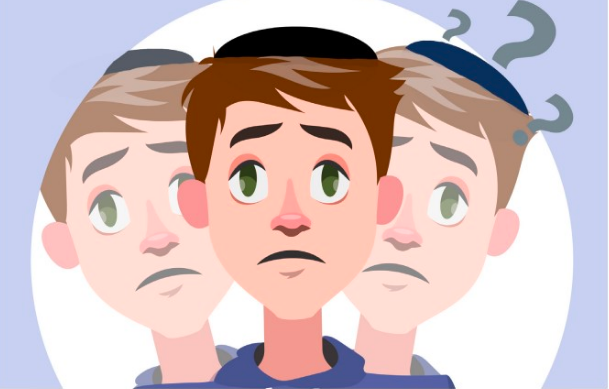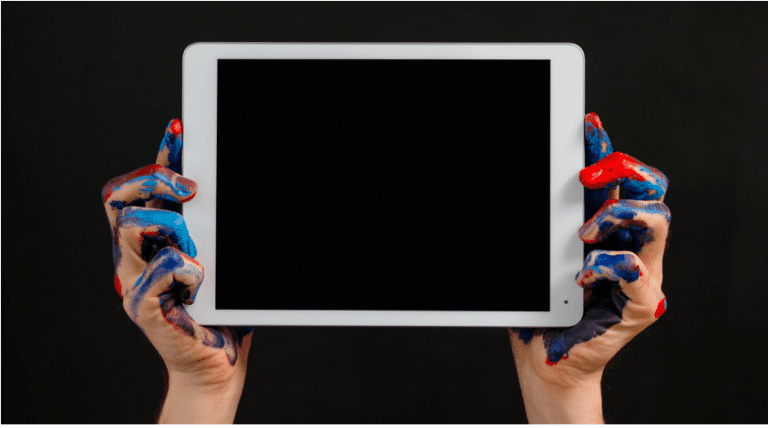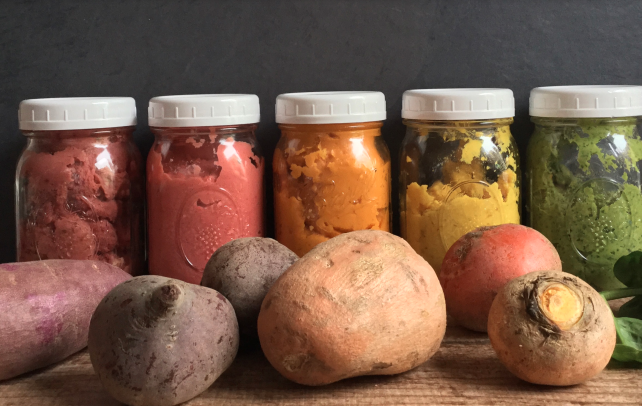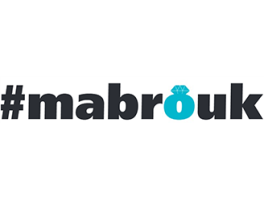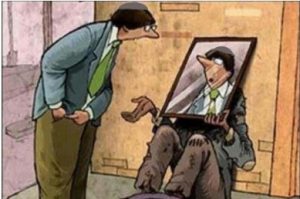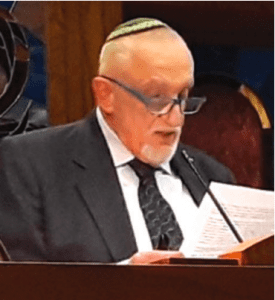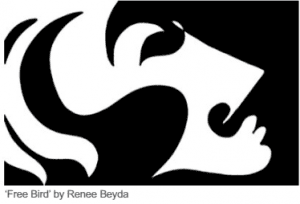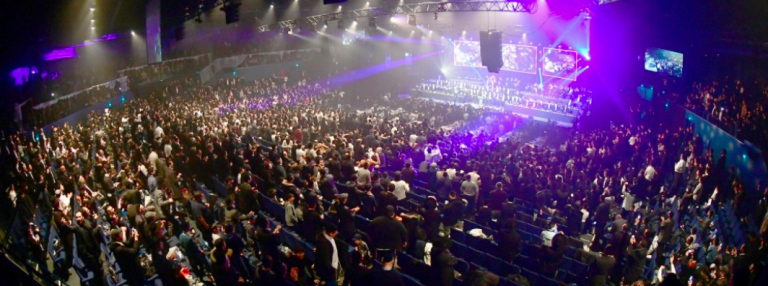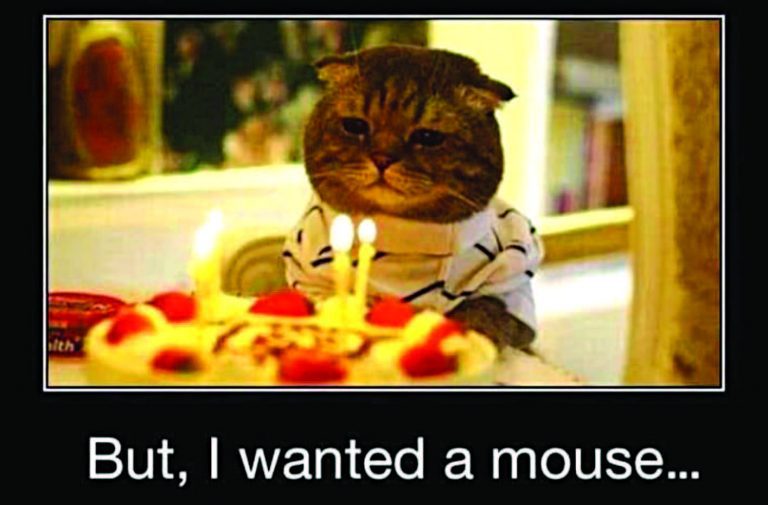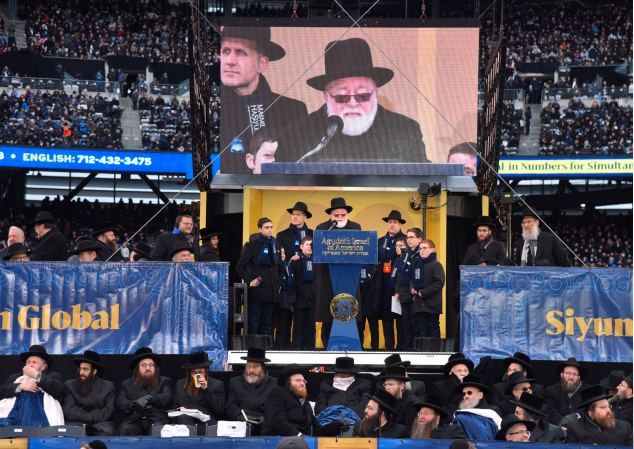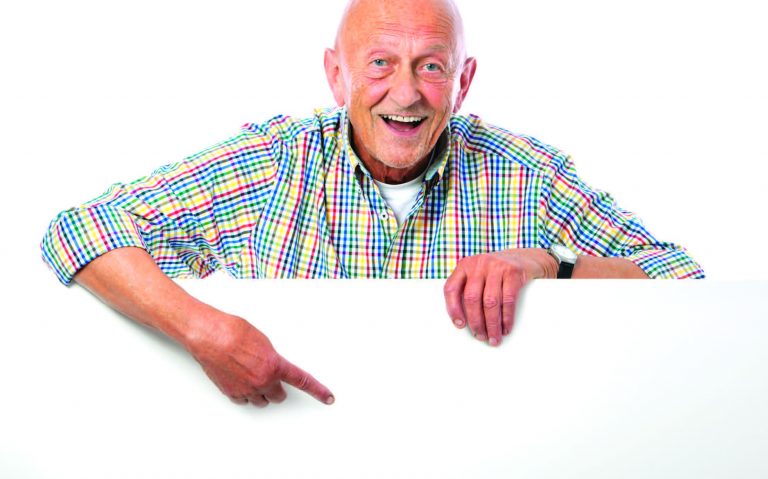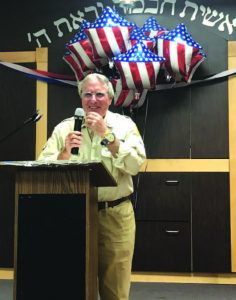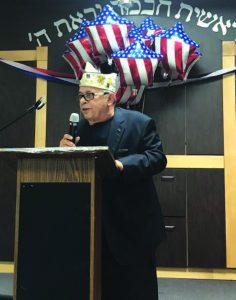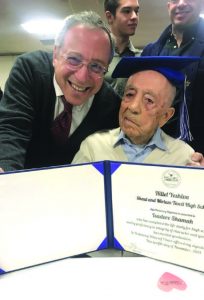Why is it any less “religious” to eat non-kosher or violate Shabbat, than to be rude or to deceive people?”
The Book of Shemot might be described as the book of miracles. Numerous remarkable miracles, of many different kinds, occur throughout this book.
In Egypt, the women among Beneh Yisrael conceived and delivered sextuplets, leading to a supernatural population explosion. Gd appeared to Moshe in the vision of a bush that was on fire but was not consumed. He gave Moshe three miracles to perform for Beneh Yisrael to prove that Gd spoke to Him, such as turning his staff into a snake. Gd performed ten miraculous plagues and then split the sea to free His nation from Egyptian bondage. When they entered the desert, He provided them with food that fell each morning from the heavens, and water from a supernatural well that traveled with them. He miraculously helped them defeat the nation of Amalek which attacked them. And then they arrived at Mount Sinai, where He revealed Himself to them and gave them the Torah.
But there was also another miracle – one which is far less known, but certainly no less important.
Fifty/Fifty
At the time when Beneh Yisrael received the Torah at Mount Sinai, sacrifices were offered, and a special ritual was performed with the blood. As the Torah tells at the end of Parashat Mishpatim, Moshe divided the blood into two halves, one of which he placed in containers, and the other half was poured over the altar. He then sprinkled some of the blood on the people, announcing, “This is the blood of the covenant which Gd has struck with you…” (Shemot 24:8).
Rashi, based on the Gemara, comments that in truth, it was not Moshe who split the blood into two halves. This was done by an angel, sent especially by Gd for this purpose. The blood needed to be divided precisely equal, with not even 1 cc added to or missing from either half. No human being is capable of such precision, and so Gd dispatched an angel from the heavens (!!!!) to come along and divide the sacrificial blood to produce two exactly equal halves.
We must ask, why was it so important for these halves to be so precisely equal? What could have possibly gone wrong if the division was off by 1 cc? Would this negligible discrepancy have had any effect on the process of Matan Torah?
We understand the need for ten miracles to punish Pharaoh and the Egyptians, and to prove Gd’s unlimited power, which they denied. We understand the need for a miraculous means of sustenance as Beneh Yisrael journeyed through the dry, searing, uninhabitable desert. But it seems very difficult to understand the need for a miraculous division of sacrificial blood.
Rav Yitzchak Hutner, the famed Rosh Yeshiva of Yeshiva Chaim Berlin here in Brooklyn (1906-1980), offered a powerful explanation. The division of the sacrificial blood at the time Matan Torah, he said, was profoundly significant. It represented the two basic categories of laws contained in the Torah – ritual laws, and interpersonal laws. And so they needed to be precisely equal.
As we know, the Ten Commandments, which constitute the blueprint of the entire Torah, were engraved on two stone tablets, with five commandments written on each. The first tablet featured the commandments “ben adam laMakom” – that govern our relationship to the Almighty – and the second featured the commandments “ben adam lahavero” – that govern our relationship to our fellowman. The Torah refers to the two tablets as “sheneh luhot ha’edut – the two tablets of testimony.” Our sages noted that the Torah did not have to emphasize “sheneh” – that they were two tablets, because the word “luhot” is written in the plural form, which already informs us that there were two stones. The emphasis of “sheneh,” the rabbis teach us, indicates that the two slabs of stone were precisely the same size. The point being made – and strongly emphasized – is that neither area of religious life is more important than the other. One cannot embrace only the Torah’s ethical, interpersonal code while ignoring its ritual requirements, and one cannot follow only the ritual obligations while ignoring the interpersonal responsibilities which the Torah imposes. The two tablets were therefore precisely the same size – to teach us that the weight and gravity of the two basic categories of obligations are precisely equal.
Significantly, the first word of the Ten Commandments is “Anochi – I,” a reference to Gd, and the final word is “rei’echa – your fellow.” The entire body of the Ten Commandments is ensconced in this duality. At the heart and core of Torah is the notion that we have responsibilities and obligations both to Gd and to our fellowman. These two cannot ever be separated from one another, because both are equally integral to the religious lives that we are to lead as Gd’s chosen nation.
How important is this concept? So important, Rav Hutner writes, that an angel was sent from the heavens to make sure that neither portion of sacrificial blood would be a fraction of a milliliter larger than the other.
As remote a possibility as it was that anybody would have noticed such a slight discrepancy between the two basins – it was VITALLY IMPORTANT that the two halves were exactly equal. Gd needed to impress upon Beneh Yisrael, and upon Jews for all generations, that there is absolutely no possibility of affording greater importance to one area of Torah over the other. He needed to make it absolutely clear that both areas of responsibility are precisely equal.
This is why a miracle was necessary. The “equality” of the two sections of Torah is so fundamental, and so essential for us to recognize, that superhuman precision was needed to produce the symbolic representation of these two sections.
The Mistake of Religious Compartmentalization
This might help solve a mystery regarding Matan Torah that many commentators grappled with.
In the Torah’s account of the events, we find Beneh Yisrael making two different proclamations. When Moshe first came to them and conveyed to them the laws he had heard from Hashem, they responded, “Kol hadevarim asher diber Hashem na’aseh – All the words that Gd has spoken, we will observe” (24:3). Moshe then constructed an altar, ordered the offering of sacrifices, and split the blood. At that point, Beneh Yisrael made their more famous proclamation: “Kol asher diber Hashem na’aseh venishma – All that Gd has spoken, we will observe and we will hear” (24:7). Why did the people repeat their declaration of commitment to the Torah after the blood was split into two halves? And why did they first announce only, “na’aseh – we will observe,” and then announce, “na’aseh venishma – we will observe and we will hear”?
The word nishma actually does not mean “we will hear.” The more accurate translation of the verb sh.m.a. is “understand,” or “comprehend.” Thus, for example, when we proclaim, “Shema Yisrael Hashem Elokenu Hashem ehad,” what we are saying is not, “Hear, O Israel,” but rather “Understand, O Israel.” And thus “na’aseh venishma” really means, “We will observe and we will understand.”
Developing this point further, the words “na’aseh” and “nishma” refer, respectively, to different categories of mitzvot: “na’aseh” expresses commitment to those laws which we can only “observe,” without fully understanding them. This is the faith and commitment we pledge to the Torah’s ritualistic commands, which we cannot fully comprehend. By contrast, “nishma” expresses commitment to those commands which we can understand, the Torah’s ethical code which is aimed at creating a peaceful, harmonious, just society.
Initially, Beneh Yisrael proclaimed only “na’aseh,” figuring that it sufficed to pledge their commitment to the Torah’s ritualistic obligations, to the laws ben adam laMakom. After all, they mistakenly thought, if they are entering into a covenant with Gd, then they needed to commit to do His will, to fulfill their obligations to Him. Interpersonal laws, they assumed, were not included in the covenant they were forging with Gd.
Precisely for this reason, Moshe proceeded to offer sacrifices and have the blood divided into two halves with supernatural accuracy. He wanted to correct the people’s very dangerous mistake, the mistake of religious compartmentalization, the perception that religion is only about ritual, about our obligations to Gd, and does not govern our interpersonal conduct. He showed them that the two halves are exactly equal, that neither tablet can ever be given primacy over the other. Our obligations to our fellow are not one iota less vital to the Jewish religion than our obligations to Gd.
The people then responded, “na’aseh venishma” – that they pledged their commitment to both tablets, to both areas of the Torah, and will be equally devoted to the Torah’s ethical code as they will be to the Torah’s ritual code. Upon seeing the miraculous division of the blood, they recognized that they needed to make a dual commitment – a commitment to fulfill their responsibilities to Hashem, and a commitment to fulfill their responsibilities to one another.
“Tug-of-War” at the Foot of Mount Sinai
Unfortunately, as we know, the great heights which Beneh Yisrael achieved at the time of Matan Torah did not last. Just 40 days later, they plummeted to astonishing depths. Gripped by terror when Moshe did not return from atop the mountain when they had expected, they did what we might call a “theological about-face,” turning their backs on everything Moshe had taught them. They fashioned a golden calf which they then worshipped, amid frivolous merrymaking and festivity. Moshe came down the mountain and was greeted by this dreadful spectacle, and he took the two stone tablets and threw them to the ground, shattering them.
Avot De’Rabbi Natan teaches that Moshe faced some resistance before he threw the tablets. The nation’s elders saw what Moshe was planning to do, and they rushed to stop him. They wanted to prevent him from shattering the sacred stone tablets, upon which Gd had Himself engraved the commandments. A “tug-of-war” ensured, with Moshe ultimately prevailing.
Why did the elders resist? Why did they oppose Moshe’s decision to break the tablets?
One rabbi explained that the elders did not see any reason why Beneh Yisrael forfeited the right to receive Gd’s commands. After all, they violated only the first two commandments: the command of “Anochi Hashem Elokecha” – to believe in Gd’s existence – and the command of “Lo yiheyeh lecha Elohim aherim” – which forbids worshipping other deities. The elders felt that since Beneh Yisrael had rejected only these two commands, there was no need to deny them the other eight.
Moshe disagreed. He understood, and he needed to show, that the commandments are all connected. We cannot accept some and discard others. If Beneh Yisrael abrogated the first two clauses of the “contract,” then they abrogated the entire thing. There cannot be any “picking and choosing.” The Ten Commandments comprise a single, integrated entity, and disregarding part means disregarding all.
Our sages teach that Gd congratulated Moshe for taking this bold measure of shattering the tablets. It was a drastic, surprising decision, but Gd approved. It was vitally important for Moshe to dispel the notion that part of the Torah can exist without the rest. He needed to show – even at the expense of the stone tablets he had received from Gd – that we must embrace the entirety of the Torah, and cannot commit ourselves to one part but not the other.
This perspective is reinforced by the mitzvah of mahasit hashekel – the half-shekel tax that all Jews were required to pay to the Bet Hamikdash, a mitzvah that we commemorate on the special Shabbat known as Shabbat Shekalim, which we observe on the Shabbat before Rosh Hodesh Adar. The Talmud Yerushalmi teaches that this half-shekel payment serves to atone for the sin of the golden calf. The Biblical shekel consisted of 20 gerah (an ancient measurement of weight) of gold (Shemot 30:13), and so a half-shekel consisted of 10 gerah. The Talmud Yerushalmi thus explains that the half-shekel payment atones for the people’s violation of the Ten Commandments when they made the golden calf.
Indeed, Moshe was absolutely correct. By transgressing the first two commandments, the people transgressed all ten commandments – because it’s a “package deal,” and we cannot ever accept some of the mitzvot but not the others.
The “Religious” Jew Who Eats on Yom Kippur
The Gemara (Baba Metzia 59b) tells the famous story of a debate that raged between Rabbi Eliezer and his colleagues regarding the status of a certain type of oven (“tanur shel achnai”). Rabbi Eliezer maintained that the oven is susceptible to tum’ah (ritual impurity), and other sages disagreed. In order to prove his position, Rabbi Eliezer performed several miracles, such as making the water of the nearby stream flow the opposite direction. His colleagues refused to yield, noting that miracles are irrelevant in the process of halachic decision-making. They proceeded to take all the food which Rabbi Eliezer had declared tahor (pure) according to his view, and burn it in his presence to make it clear that they rejected his ruling.
The Talmud Yerushalmi comments that Rabbi Eliezer was, quite obviously, well aware of the principle established by the Torah in Parashat Mishpatim (23:2), “ahareh rabim lehatot” – that we follow the majority opinion. However, he refused to yield to his colleagues’ decision because they burned the food in his presence. The Korban Ha’edah commentary explains that in Rabbi Eliezer’ view, rabbis who act discourteously, without proper derech eretz (manners), are not qualified to rule on matters of halachah. Their opinion simply did not count once they acted with disrespect. Those who disregard one part of Torah cannot be considered adherents of, let alone authorities on, other parts of Torah.
It is told that people once came to a certain rabbi and asked him what he thought about religious Jews who are dishonest in their financial dealings. He replied, “They’re the same as religious Jews who eat on Yom Kippur.”
The people asked, “What do you mean? How could a Jew who eats on Yom Kippur be religious?”
The rabbi said, “And how could a Jew who acts dishonestly be religious?”
There is something very skewed about our perspective if we can consider a discourteous, arrogant, selfish, insensitive, or dishonest person “religious,” but we cannot consider somebody who eats non-kosher food “religious.” Why does the neglect of ritual mitzvot make somebody “not religious,” but the neglect of the Torah’s ethical doesn’t? Why is it any less “religious” to eat non-kosher or violate Shabbat, than to be rude or to deceive people?
At the time of Matan Torah, an angel was needed to show the people the equality between the ritual laws and the interpersonal laws. If only we had an angel to teach us this lesson in our day, as well. Rabbis speak so often, and so passionately, about the vital importance of decency, honesty, good manners, etiquette, and respect and consideration for other people. And yet, there are still, sadly, many Jews who pray three times a day, who study Torah, observe Shabbat, maintain the strictest standards of kashrut – but simply aren’t nice people. I cannot even begin to imagine how any Jew can consider himself “religious” if he is rude or dishonest, if he observes the Torah’s rituals but ignores the Torah’s ethics. It simply makes no sense.
As we read this month about Matan Torah, let us renew our commitment to the entire “package” – and always remember that we are “religious” only if we wholeheartedly accept both areas of the Torah, without even considering the possibility that one can exist without the other.



